|
BACKGROUND
TABERNACLE - Eaton
TABERNACLE - Davis
ALTAR
ALTAR
LAVER (WASHING BASIN)
(TABLE OF) SHEWBREAD
(TABLE OF) SHOWBREAD
CANDLESTICK (LAMPSTAND)
LAMPS, LAMPSTAND:
THE ALTAR OF INCENSE
INCENSE
ARK
ARK OF THE COVENANT
The
full background to this teaching is available online at this link
Full Background Information on Moses Tabernacle here
|
Online links to scriptures (New International Version [NIV] unless otherwise stated) are shown in blue
| “POTTED†HISTORY OF THE CHURCH - 1 |
|
|
| THE EARLY CHURCH: |
|
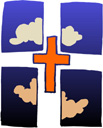 30AD April: Death of Jesus on the cross. (The day of the Feast of Passover) 30AD April: Death of Jesus on the cross. (The day of the Feast of Passover)
30AD April: Resurrection and appearance to Mary Magdalene. (The day of the Feast of Firstfruits)
|
|
|
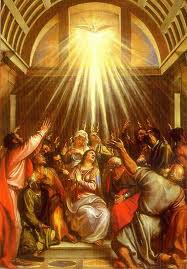 30AD May: Ascension to heaven. Believers reduced from 500 to 120 at Pentecost. 30AD May: Ascension to heaven. Believers reduced from 500 to 120 at Pentecost.
30AD May: Pentecost. Holy Spirit arrival. 3,000 added to the Church. (The day of the Feast of Weeks, that is Pentecost) Symbolic restoration of the 3,000 killed for making the infamous golden calf while the law was being given to Moses on Mt Sinai, at Pentecost, approximately 1,500 years before. Chance? No way!
|
|
|
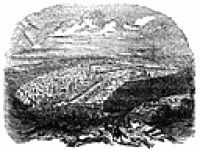 33AD Church still confined to Jerusalem. Many miracles occurred as they moved in the power of the Holy Spirit. However, contrary to popular belief, the very early church was not keen to “go and make disciples of all nations†(Matthew 28:19). They had a siege mentality. They did not want to see the Church taken over by gentiles as their nation had been by the Romans and others, in the past. Jesus preached to the Jews, so they also carried on in the same way, in the same tradition or ‘comfort zone’. They were disobedient to His new command, which may well have had important implications for all Church history, as we will see later. Conversions occurred and the Church spread, but mainly through people visiting Jerusalem and taking ‘the way’ home with them. 33AD Church still confined to Jerusalem. Many miracles occurred as they moved in the power of the Holy Spirit. However, contrary to popular belief, the very early church was not keen to “go and make disciples of all nations†(Matthew 28:19). They had a siege mentality. They did not want to see the Church taken over by gentiles as their nation had been by the Romans and others, in the past. Jesus preached to the Jews, so they also carried on in the same way, in the same tradition or ‘comfort zone’. They were disobedient to His new command, which may well have had important implications for all Church history, as we will see later. Conversions occurred and the Church spread, but mainly through people visiting Jerusalem and taking ‘the way’ home with them.
|
|
|
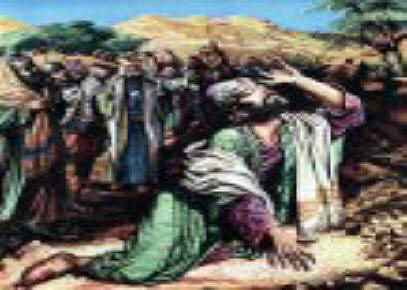 37AD The conversion of Paul, aged 29. After a period of seclusion, Paul started his ministry at age 30, the same age as Jesus. Significant, in that it was the age the Levites and priests started work in the Tabernacle, the accepted age of spiritual maturity. Paul, a Jew born in Tarsus in Greece, a Roman citizen, trained as a Pharisee from a young age in Jerusalem. An internationalist, he was called to do the work the Apostles and early church had neglected to do. Not God’s first choice but the ideal backup – right age, right birth, right training and fully committed to all he did, whether it was persecuting the Christians or leading them to Christ! Initially the churches were set up with unity of doctrine and church government but gradually, as Paul’s letters show, divisions began to appear. 37AD The conversion of Paul, aged 29. After a period of seclusion, Paul started his ministry at age 30, the same age as Jesus. Significant, in that it was the age the Levites and priests started work in the Tabernacle, the accepted age of spiritual maturity. Paul, a Jew born in Tarsus in Greece, a Roman citizen, trained as a Pharisee from a young age in Jerusalem. An internationalist, he was called to do the work the Apostles and early church had neglected to do. Not God’s first choice but the ideal backup – right age, right birth, right training and fully committed to all he did, whether it was persecuting the Christians or leading them to Christ! Initially the churches were set up with unity of doctrine and church government but gradually, as Paul’s letters show, divisions began to appear.
|
|
|
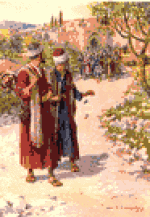 48AD Paul and Barnabas go to Jerusalem to sort out a crucial problem within the early church that was causing a division between Jewish and gentile believers. The argument concerned the necessity for gentile believers to follow Jewish law and tradition, in particular the need for male circumcision. A ‘painful process’ for an adult male, but a requirement for entry into Judaism. After lengthy debate it was agreed that under ‘grace’, this previous legal requirement was no longer necessary. Much to the relief of gentile male converts, I’m sure! Tradition dies hard though! Legalism of a different sort didn’t take too long to return, particularly once the state got involved with the church. For the survival of the state effectively depends upon the rule of law. 48AD Paul and Barnabas go to Jerusalem to sort out a crucial problem within the early church that was causing a division between Jewish and gentile believers. The argument concerned the necessity for gentile believers to follow Jewish law and tradition, in particular the need for male circumcision. A ‘painful process’ for an adult male, but a requirement for entry into Judaism. After lengthy debate it was agreed that under ‘grace’, this previous legal requirement was no longer necessary. Much to the relief of gentile male converts, I’m sure! Tradition dies hard though! Legalism of a different sort didn’t take too long to return, particularly once the state got involved with the church. For the survival of the state effectively depends upon the rule of law.
|
|
|
 Paul executed in Rome. He had succeeded in establishing toehold churches throughout much of the known world, using his normal method of first preaching to the Jews in the local synagogue. When the Jews threw him out, which they invariably did, he turned to the local gentiles. The city authorities then usually ejected him, usually at the request of the Jews! The churches of this time were small, mostly house churches, initially at least. No giant cathedrals yet! Paul executed in Rome. He had succeeded in establishing toehold churches throughout much of the known world, using his normal method of first preaching to the Jews in the local synagogue. When the Jews threw him out, which they invariably did, he turned to the local gentiles. The city authorities then usually ejected him, usually at the request of the Jews! The churches of this time were small, mostly house churches, initially at least. No giant cathedrals yet!
|
|
|
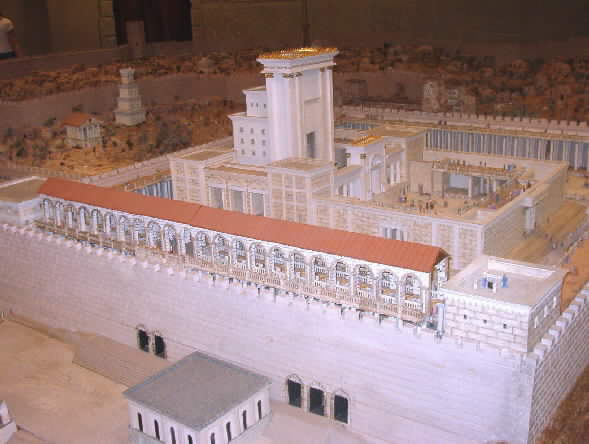 70AD 5th August: The burning of the temple, as prophesied by Jesus. Still hasn’t yet been physically replaced although there are Jews wishing to do so. As Christians, Jesus is our ‘spiritual temple’, so the rebuilding of a physical temple is unnecessary. 70AD 5th August: The burning of the temple, as prophesied by Jesus. Still hasn’t yet been physically replaced although there are Jews wishing to do so. As Christians, Jesus is our ‘spiritual temple’, so the rebuilding of a physical temple is unnecessary.
b>70AD 2nd September: The final destruction of the upper part of Jerusalem. Led to the Christians of the area being scattered throughout the known world, taking their faith and beliefs with them. Yes, a tragedy for the Jewish nation. But a positive step for the spreading of the gospel. God’s ways are certainly different to ours!
Herod's Temple
|
|
|
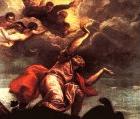 c.100 Death of the last of the Apostles, John. Authority and unity of ‘apostleship’ disappeared. c.100 Death of the last of the Apostles, John. Authority and unity of ‘apostleship’ disappeared.
John on Patmos
|
| THE DECLINE OF THE CHURCH: |
|
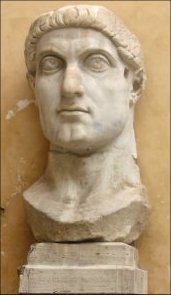 130 Laying on of hands becomes a formal ritual. 130 Laying on of hands becomes a formal ritual.
140 Ministry of the prophets vanishes.
150 Gifts of the Spirit are disappearing entirely.
160 Plurality of eldership fades away.
180 Local church autonomy diminishes as churches start to come under the control of Rome.
187 First infant baptism and sprinkling. Form over substance.
200 Ritual becoming the norm as the church had form but had lost its power. Water baptism in the name of the Lord Jesus Christ denied, largely through Pope Stephen.
210 Doctrine of the priesthood of all believers rejected as a class of clerics developed.
225 Church membership became based on a creed rather than salvation.
240 Holiness disappeared and worldliness infiltrated the church.
350 Roman Emperor Constantine made Christianity the state religion. Salvation by faith not required for membership, with many ‘heathen’ being forced to accept Christianity by the sword.
380 Rome became the final authority in church matters.
Bust of Emperor Constantine
|
| <i>NEXT WEEK:</i> “POTTED†HISTORY OF THE CHURCH - 2 |
|
 Completing our look at the establishment, growth, decline, and regrowth of the church over nearly 2,000 years. Completing our look at the establishment, growth, decline, and regrowth of the church over nearly 2,000 years.
Plus a glimpse of the church yet to come!
|
| A NOTE FROM DAVID |
|
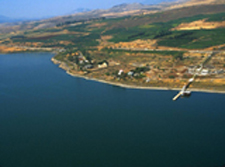 In our human way, we would expect that once the church was established it would simply continue to grow. But God doesn't think like us! As I discover frequently! In our human way, we would expect that once the church was established it would simply continue to grow. But God doesn't think like us! As I discover frequently!
We understand that visions die before they are fulfilled, and a similar pattern applies to the church. Let's see what happens next, next week!
Orthodox Triangle Area Round Galilee
Certainly not all people who lived in this fertile area were religious or even Jewish. But it is clear that most inhabitants of the sea’s northwestern side were very religious—a fact supported by the many synagogues discovered there.
Jesus conducted his ministry here, and the Bible indicates that most of his miracles were performed in three towns of this area: Capernaum, Korazin, and Bethsaida. These three cities are sometimes called the “gospel (or orthodox) triangle†because they form a triangle, with the points about three miles apart.
Galilee was not a backwoods region; the international trade route, called the Via Maris or the Way of the Sea, ran through this area near Capernaum. Israel had always lived in the land that connected great empires. The whole world knew of them because the trade routes passed through their country. As the nations of the world passed by, Israel could obey God’s command and be his witnesses (Isa. 43:10—12).
Jesus chose Capernaum as his home to fulfill the prophecy that the Messiah would live in Galilee by “the way to the sea†(Matt. 4:12—17). But he also chose this crossroads area for ministry so that his message could be heard by people from around the world.
The main towns in this area included:
Capernaum—Located on the shore of the sea, this major town was home to fishermen, farmers, a Roman garrison, and a customs house (where tax collectors worked). Capernaum had a large synagogue, the remains of which are beneath the ruins of a later synagogue. Many of the New Testament stories about Jesus took place here. Jesus’ disciple Matthew, a tax collector, came from this town ( Matt. 8:5—17; 9:1—34; 17:24—27, 18; Mark 1:21—34; 2:1—12; Luke 7:1—10; John 6:16—71).
Korazin—Korazin was a village located three miles north of Capernaum. Although this was one of the towns where most of Jesus’ miracles took place, the Bible records no specific visit of Jesus to this town. It was large and prosperous and had a synagogue. Its economic pursuits included the processing of olives.
Bethsaida—Peter, Andrew, and Philip were successful fishermen from Bethsaida (John 1:44; 12:21). This town was located on the northern end of the sea near the mouth of the Jordan River. Jesus fed the five thousand (Luke 9:10—17) and healed a blind man (Mark 8:22—26) here. The ruins of this village are being uncovered for the first time, revealing a prosperous town constructed of basalt, a black rock common to the area.
Source: http://www.followtherabbi.com
|
So until next week.......
MAY GOD BLESS YOU AND YOU BLESS GOD!
His servant and yours

Learn more about us at...
www.wwj.org.nz/about.php
|
A DAVID'S DOODLING
401. Unity in Christ is so close to God's heart but so far away from ours!
David Tait
|
Check
out the WWJ website for….
More David's Doodlings: www.wwj.org.nz/dd.php
Eagles Fly High!: http://www.wwj.org.nz/eagle.php
Eagles Fly High! (Pastors, Teachers and Students): http://www.wwj.org.nz/eaglepts.php
God Facts (A mine of information): http://www.wwj.org.nz/gfacts.php
Facts for Fun: http://www.wwj.org.nz/facts.php
|

 30AD April: Death of Jesus on the cross. (The day of the Feast of Passover)
30AD April: Death of Jesus on the cross. (The day of the Feast of Passover)  30AD May: Ascension to heaven. Believers reduced from 500 to 120 at Pentecost.
30AD May: Ascension to heaven. Believers reduced from 500 to 120 at Pentecost. 33AD Church still confined to Jerusalem. Many miracles occurred as they moved in the power of the Holy Spirit. However, contrary to popular belief, the very early church was not keen to “go and make disciples of all nations†(Matthew 28:19). They had a siege mentality. They did not want to see the Church taken over by gentiles as their nation had been by the Romans and others, in the past. Jesus preached to the Jews, so they also carried on in the same way, in the same tradition or ‘comfort zone’. They were disobedient to His new command, which may well have had important implications for all Church history, as we will see later. Conversions occurred and the Church spread, but mainly through people visiting Jerusalem and taking ‘the way’ home with them.
33AD Church still confined to Jerusalem. Many miracles occurred as they moved in the power of the Holy Spirit. However, contrary to popular belief, the very early church was not keen to “go and make disciples of all nations†(Matthew 28:19). They had a siege mentality. They did not want to see the Church taken over by gentiles as their nation had been by the Romans and others, in the past. Jesus preached to the Jews, so they also carried on in the same way, in the same tradition or ‘comfort zone’. They were disobedient to His new command, which may well have had important implications for all Church history, as we will see later. Conversions occurred and the Church spread, but mainly through people visiting Jerusalem and taking ‘the way’ home with them.  37AD The conversion of Paul, aged 29. After a period of seclusion, Paul started his ministry at age 30, the same age as Jesus. Significant, in that it was the age the Levites and priests started work in the Tabernacle, the accepted age of spiritual maturity. Paul, a Jew born in Tarsus in Greece, a Roman citizen, trained as a Pharisee from a young age in Jerusalem. An internationalist, he was called to do the work the Apostles and early church had neglected to do. Not God’s first choice but the ideal backup – right age, right birth, right training and fully committed to all he did, whether it was persecuting the Christians or leading them to Christ! Initially the churches were set up with unity of doctrine and church government but gradually, as Paul’s letters show, divisions began to appear.
37AD The conversion of Paul, aged 29. After a period of seclusion, Paul started his ministry at age 30, the same age as Jesus. Significant, in that it was the age the Levites and priests started work in the Tabernacle, the accepted age of spiritual maturity. Paul, a Jew born in Tarsus in Greece, a Roman citizen, trained as a Pharisee from a young age in Jerusalem. An internationalist, he was called to do the work the Apostles and early church had neglected to do. Not God’s first choice but the ideal backup – right age, right birth, right training and fully committed to all he did, whether it was persecuting the Christians or leading them to Christ! Initially the churches were set up with unity of doctrine and church government but gradually, as Paul’s letters show, divisions began to appear.  48AD Paul and Barnabas go to Jerusalem to sort out a crucial problem within the early church that was causing a division between Jewish and gentile believers. The argument concerned the necessity for gentile believers to follow Jewish law and tradition, in particular the need for male circumcision. A ‘painful process’ for an adult male, but a requirement for entry into Judaism. After lengthy debate it was agreed that under ‘grace’, this previous legal requirement was no longer necessary. Much to the relief of gentile male converts, I’m sure! Tradition dies hard though! Legalism of a different sort didn’t take too long to return, particularly once the state got involved with the church. For the survival of the state effectively depends upon the rule of law.
48AD Paul and Barnabas go to Jerusalem to sort out a crucial problem within the early church that was causing a division between Jewish and gentile believers. The argument concerned the necessity for gentile believers to follow Jewish law and tradition, in particular the need for male circumcision. A ‘painful process’ for an adult male, but a requirement for entry into Judaism. After lengthy debate it was agreed that under ‘grace’, this previous legal requirement was no longer necessary. Much to the relief of gentile male converts, I’m sure! Tradition dies hard though! Legalism of a different sort didn’t take too long to return, particularly once the state got involved with the church. For the survival of the state effectively depends upon the rule of law. 
 70AD 5th August: The burning of the temple, as prophesied by Jesus. Still hasn’t yet been physically replaced although there are Jews wishing to do so. As Christians, Jesus is our ‘spiritual temple’, so the rebuilding of a physical temple is unnecessary.
70AD 5th August: The burning of the temple, as prophesied by Jesus. Still hasn’t yet been physically replaced although there are Jews wishing to do so. As Christians, Jesus is our ‘spiritual temple’, so the rebuilding of a physical temple is unnecessary. c.100 Death of the last of the Apostles, John. Authority and unity of ‘apostleship’ disappeared.
c.100 Death of the last of the Apostles, John. Authority and unity of ‘apostleship’ disappeared. 130 Laying on of hands becomes a formal ritual.
130 Laying on of hands becomes a formal ritual. Completing our look at the establishment, growth, decline, and regrowth of the church over nearly 2,000 years.
Completing our look at the establishment, growth, decline, and regrowth of the church over nearly 2,000 years.  In our human way, we would expect that once the church was established it would simply continue to grow. But God doesn't think like us! As I discover frequently!
In our human way, we would expect that once the church was established it would simply continue to grow. But God doesn't think like us! As I discover frequently!